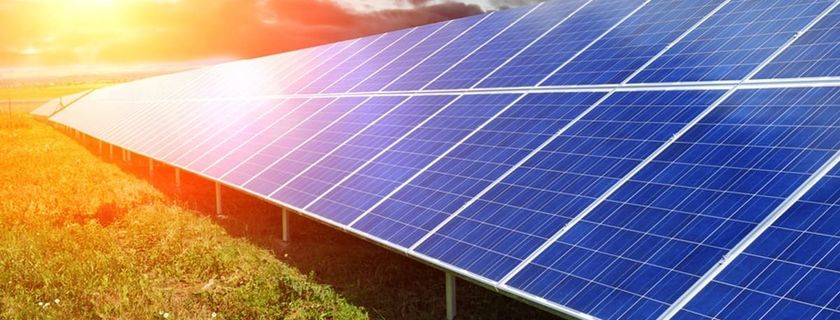
CIRCUSOL: Solar power business models towards a circular economy in Europe (PRESS RELEASE)
CIRCUSOL: Solar power business models towards a circular economy in…

Disclaimer: This article is based on the Flemish/Belgian legislation. Nevertheless, similar legal principles can often be found in other civil law countries.
In a Solar as a Service (SaaS) agreement, the service provider remains the owner of the PV installation, both legally and economically. For the provider, it is essential that the ownership of the PV installation remains with the provider and that third parties are aware of this. Nevertheless, in most civil law countries, solar panels become immovable goods as a result of incorporation into a building. Consequently, the doctrine of accession applies. Accession is a way of acquiring ownership under civil law, based on the idea that the owner is entitled to everything that the property produces and to what is either naturally or incidentally united with the property. This means that in case of accession, the landowner becomes the owner of all buildings and immovable goods that are incorporated into or onto the building. In short, the user will become the owner of the incorporated PV installation. The retention of the right of ownership by the provider can, therefore, become problematic. When entering into a SaaS agreement, due consideration must be given on how the provider can retain his right of ownership and how this right can be invoked against third parties.
Nonetheless, it is possible for the landowner to abstain from this principle of accession. This is considered equivalent to a right of superficies. Under Belgian property law, a right of superficies is a right in rem to have buildings, constructions or plants in whole or in part, on, above or below other people's land for a duration of up to 50 years. A right of superficies could provide a solution to the issue of accession. However, it is doubtful whether the granting of a right of superficies is the solution for SaaS agreements in practice. A number of remarks need to be taken into account:
What is the solution to avoid accession? Research has shown that the traditional legislative exceptions on the rule of accession – the accessory right of superficies and the retention of title – do not bring salvation. Nor is it possible to regulate this between parties on a contractual basis. Changes at the level of the legislation should be considered. In the Belgian doctrine, the call for a cheaper circular right of superficies is growing stronger.
This circular right of superficies would allow the provider to establish a right of superficies on all components of the immovable property. It will therefore no longer be relevant whether these components are susceptible to an independent existence or not. Moreover, the requirement of independence loses its effect. The reason for this is that in a circular economy, it is precisely the purpose to safeguard (and even increase) the value of raw materials and objects by keeping the ownership of these different materials or objects separate, whereas in traditional Belgian law the requirement of independency (as part of the principle of unity) is intended to protect the value of the entire object, based on the idea that the unit is more than the sum of the individual components.
Now that certain components of the building, such as sunroof tiles, belong to someone other than the building owner based on this circular right of superficies, it is important that third parties are aware of this. The publication can, of course, take place in the traditional mortgage register.
However, there is no harm in thinking of other, alternative registers, in which it can be made clearer that certain components of real estate form a separate property law entity. For example, the classic mortgage register could be linked to Thomas Rau's Madaster.
Essentially, the Madaster is a cadastral register for building materials based on the online collection of the Materials Passports. It is perfectly possible to mention in these material passports the owner of the materials or goods incorporated in the immovable property. The combination of the Madaster and the classical register would be ideal. In order to roll out such a Madaster, it is of course important that the material passports are drawn up by the providers. By doing so, they will make such undertakings possible in the future.
ABOUT THE AUTHOR: Emilie Verbeure obtained her law degree at the KU Leuven with the specialization in International & European law. She then proceeded with the master’s studies in Environmental Sciences at the University of Antwerp where she conducted research on the legal considerations, possibilities and barriers for PSS in the photovoltaic sector made in the context of the European project CIRCUSOL, in collaboration with VITO. She currently works as a lawyer at Flemish Energy Agency.
SAGAERT, V., TILLEMAN, B. and VERBEKE, A.L., Vermogensrecht in kort bestek in Recht in kort bestek, Antwerpen, Intersentia, 2013, 482 p.
SNAET, S. and TRUYEN, P., ‘Opstalwet art. 1’ in DIRIX, E. and VAN OEVELEN, A. (eds.), Bijzondere overeenkomsten. Artikelsgewijze commentaar met overzicht van recht- spraak en rechtsleer, LXXXIII, Mechelen, Kluwer, 2010, 49–67.
VAN VAERENBERGH, A. and LEYMAN, F., ‘“ Product als dienst ” - een stap in de richting van een circulaire economie’, MER 2019, 20–30.
VERHEYE, B., ‘Toekomst van de circulaire vastgoedeconomie’, TPR 2019, afl. 1, 107–196.

CIRCUSOL: Solar power business models towards a circular economy in…